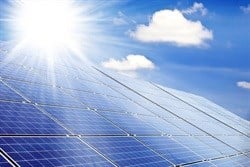






Frost & Sullivan's industrial analyst for energy and environment, Gareth Blanckenberg, says the costs of solar technologies, especially solar PV, have been rapidly declining over the past few years in Africa. "The levelised cost of energy (LCOE) is now competitive with many other conventional generation technologies, especially for distributed, off-grid and hybrid solutions."
In South Africa, PV is now able to compete with municipal distribution tariffs in several instances. The storage ability of concentrated solar power (CSP) counteracts the argument that renewables are unable to serve a baseload function in countries such as South Africa - with certain operational CSP projects having storage capabilities of up to 15 hours - while the aggregation of PV plants has been proven to substantially reduce the variability of the power generated to within an acceptable level of variability of around 5%.
New analysis from Frost & Sullivan indicates that the market earned revenues of $59.84bn in 2013 and estimates this to double to $137.02bn in 2020.
Global solar PV demand in 2014 is dominated by the Asia Pacific, which will account for approximately 46% of annual installed solar PV capacity. China, Japan, India, and Australia will continue to be the top four countries driving regional demand. With panel prices coming down drastically, Asian manufacturers are now looking at value chain integration and technical efficiencies to differentiate their products from other suppliers in the market.
In Europe the market continues to grow. Germany was the first EU country to incentivise solar PV power with feed-in-tariffs (FiTs) in 2006. The market installed capacity has expanded rapidly and it is still the largest solar power market in the world. By 2020, Germany, France, Spain, Italy, and the United Kingdom, together, plan to install more than 75GW of solar PV capacity. The total global installed PV capacity in 2013 was 137GW.
In Europe, the price of solar PV systems has witnessed a steeper fall owing to less FiTs and speculations on further subsidy cuts in the core solar power market. The unilateral obligation of the European Union member states to the Kyoto Protocol, which is designed to decrease emissions of greenhouse gases has also driven the solar power market in this region.
In the meantime, the United States has become a lucrative destination as the price of solar PV systems in the region has declined due to the reduction in imports from China following the imposition of anti-dumping and illegal subsidy tariffs on imports.
"The global solar power market is benefiting from various incentive schemes in the form of tradable green energy certificates, FiTs, subsidies, and tax rebates for the use of renewable energy for power generation," said Frost & Sullivan energy and environmental industry analyst, Pritil Gunjan. "However, these incentive schemes continue to be very heterogeneous, making solar PV penetration rates vary widely based on local and regional policies."
As such, policy decisions will drive the market during the forecast period. Environmental policies and upgrades/modifications of the electricity grid, in particular, will have a heavy influence on electricity prices for final consumers and determine the extent of solar power uptake.
The potential of the solar power market has been reined in by the high installation and maintenance costs of solar PV systems. Along with the intermittent supply of solar power and the low return on investment of solar PV systems, the availability of less expensive renewable energy technologies such as wind and bioenergy also challenge the market. As banks have been funding projects related to these proven technologies, solar power suppliers are facing increasing competitive pressures. In addition, the strong reliance on government support has impeded market development in some cases involving the withdrawal of subsidies or incentives.